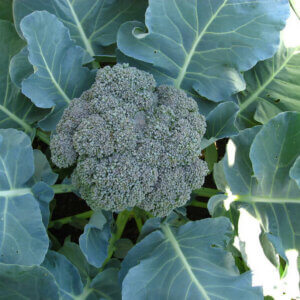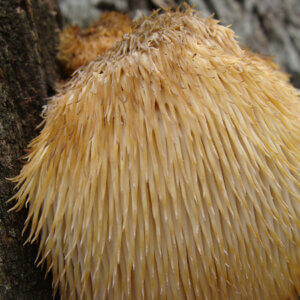Many people fail to realize that they face serious wildfire danger. However, if you live in the rural prairies, foothills, or mountainous regions of North America, you are at risk.
Fire is frightening, unpredictable, and life-threatening. Weakness in your homestead’s fire protection scheme can create opportunities for a fire to take control, often because of apathy, carelessness, neglect, or oversight.
Your homestead is the embodiment of your hopes, dreams, life savings, and hard work. You are justifiably proud of all your accomplishments and work diligently on honing your self-sufficiency skills. Don’t let it all go up in smoke.
Become Firewise
As more and more city dwellers move to the country, homes are established in the wildland-urban interface (WUI).
WUI property owners should take special precautions to help protect their lives, livestock, home, and property. In light of the millions of acres of timber and grasslands destroyed by wildfire every year, now is the time to take a good look at your homestead fire protection plan.
https://www.instagram.com/p/BZygGubHi6C/?tagged=forestfire
Homesteaders living in fire-prone ecosystems, can take fire-protection measures before a fire even starts. Learn more about safety measures you can implement to give your homestead a chance to survive while firefighters battle to bring the wildfire under control.
Elements Of Fire
Fire, a chemical reaction, requires three elements: oxygen, heat (or an ignition source), and fuel. Fire results from the reaction between the oxygen in the air and the fuel. Oxygen, heat, and fuel must combine precisely for a fire to start and for it to continue to burn. If one element is removed, a fire will not start. If a fire is already burning, it will extinguish.
Rural Fire Risks
Homesteaders residing in rural areas face unique fire risks. Often the distance between communities and residents results in fire-related challenges with a higher incident of fire deaths in rural areas than urban areas.

In addition, loss of livestock and property creates an extreme economic and emotional impact on rural residents. Protect your family and your property by paying attention and doing your part to rectify or eliminate common rural fire concerns. Some steps you can take to reduce fire risk include the following:
- Make sure that all stoves and heaters are in good repair and proper working order. Fixed heaters, such as cooktops, wood stoves, and wall heaters are involved in most rural residential fires.
- Does your homestead have a working smoke alarm? Many rural homes fail to install working smoke alarms in the home, barn, bunkhouse, and shops, increasing the risk of death in a fire. Make sure to test smoke alarms twice yearly and install fresh batteries.
- Annually inspect the wiring in the home and outbuildings. Weather and rats can cause extensive damage. Rodents chew on wiring. Extreme weather can cause electrical wiring to become brittle and break.
Fuel Sources
Fuel sources involve combustible materials such as paper, clothing, and trash as well as flammable liquids such as paint, solvents, gasoline, and propane.
Make sure that all flammable liquids are stored properly in UL-approved, labeled containers away from any ignition source such as space heaters. Keep your homestead clean and tidy, avoiding accumulations of combustible materials. Don’t let yourself become a hoarder.
While it is great to save materials that may be of future use, stacks of cardboard boxes and miscellaneous accumulated “junk” are frequently points of ignition in rural fires.
Utilize Fire Resistant Building Materials
When building or replacing roofs, select roofing materials based on tests developed by standard underwriting organizations. Underwriters Laboratory (UL) Standard 790, The American Society for Testing and Materials (ASTM) Standard E-108, and National Fire Protection Association (NFPA) Standard 276 set the standards for three characteristics of a fire-resistant roof covering, including the following:
- Roofing materials should resist the spread of fire to cathedral ceilings or the attic.
- Choose materials tested to resist flame from spreading on the rooftop.
- Select building and roofing materials designed to resist ignition from burning embers.
If a wildfire occurs, wooden decks present special issues. Decks can ignite from a surface fire from below the deck or from ash and embers falling on the surface. If ignition occurs, a burning deck presents flame impingement exposure to the side of the home, potentially setting siding on fire and/or breaking glass doors or entryway.

Broken glass can be detrimental because it can provide fire access to the interior of the structure. Highly combustible decking or siding encourages flames to spread to the roof.
The key to keeping you and your family safe is to choose to build with fire-resistant materials that take time to burn, allowing the occupants of the property adequate time to escape the inferno.
Create A Defense Space
The two most important determinants of a homestead’s ability to withstand a firestorm are the home’s structural ignitability and the amount of defensible space surrounding the structure. These two determinant factors form a concept known as the Home Ignition Zone (HIZ) or defensible space, which includes the area immediately surrounding the structures.
In order to enhance your homestead’s chance of surviving a forest fire or prairie grass fire, you must create a defensible space to slow or halt the spread of wildfire before your home and outbuildings catch ablaze.
https://www.instagram.com/p/BLponi_hkeM/?tagged=grassfire
A homestead’s defense space is that area around the home and outbuildings that have been designed or modified to reduce fire hazard by treating, reducing, or clearing manmade or natural fuels.
Clearing away flammable materials minimizes the chance of a structure fire. It also helps prevent fire from spreading to neighboring buildings or the surrounding forest and grasslands. Creating a defensible space to fight the flames is also important for firefighters that may have to respond to a wildfire emergency.
When developing a defensible space for your homestead, consider the surrounding topography, the slope of your ground, the direction of prevailing winds, and the size and type of vegetation that surrounds your property. Also consider the shape, size, and construction materials of each o fyour homestead’s structures.
When creating a defense space around your structures, start your work closest to your home and move outward.
- Remove all damaged and dead trees, shrubs, grasses, and weeds that provide fire fuel vegetation from around the structure perimeter.
- Remove dry leaves, pine needles, and branches from the roof.
- Trim tree branches to a minimum of 10 feet from other trees, removing any branches that overhang structure roofs.
- Prune or remove flammable shrubs and plants near windows.
- Trim and maintain annual grasses to a height that doesn’t exceed four inches tall.
- Prune and trim to create vertical space between grass, shrubs, and trees.
- Remove flammable materials from under decks, patios, and porches.
- Do not stack firewood against structure walls.
Fire-Resistant Landscaping
A well-maintained yard and a fire-resistant yard is not the same thing. Fire-safe landscaping utilizes fire-resistant plants, strategically planted, to help make the immediate area around structures fire-safe.
Plant placement, spacing, and ongoing maintenance are all critical, to keep fire fuels to a minimum. Fire-resistant landscaping helps to enhance the value of the property, conserve water, and beautify the homestead.
https://www.instagram.com/p/BGABwodtfCP/?tagged=fireresistantplants
Fire-resistant plants exhibit the following characteristics:
- Resin and sap materials are low
- Leaves are supple and moist
- Plant sap is clear, without a strong scent
- Plants do not have dead wood and do not shed dry materials
Select fire-retardant plants that resist ignition. Aloe, ice plant, rockrose, currant, cotoneaster, honeysuckle, and sumac are excellent choices. In fact, most any plant in the rose plant family is considered fire-resistant including apricot, plum, pear, or nectarine trees as well as hawthorn, raspberry, blackberry bushes, and roses.
Keep in mind that most deciduous trees are fire-resistant. Consider planting cherry, poplar, apple, or maple trees. These are less flammable than fir, pine, or other conifers. Juniper is but one example of a highly flammable tree. The plant tends to build up an accumulation of old, dead needles that are a storehouse of volatile foliage oils.
Avoid establishing landscape plantings that ignite readily including plants with the following:
- Stems, leaves, and twigs that contain oils, resin, or wax
- Plants with leaves that present a strong odor or are aromatic when cut or crushed
Implementing fire-resistant landscaping techniques can create a firebreak that protects your property by blocking intense heat that can spark ignition. Although establishing a fire-resistant landscape does not ensure that your homestead will survive a wildfire, it substantially increases the chances.
Keep It Wet
Keep your defense space well-watered. Any plant will ignite and burn if it’s dry enough, and if the fire is hot and slow enough. Whether a plant will survive a wildfire depends upon the type of fire, the time of year, the speed of the fire, and the moisture and chemical content of the plant.
https://www.instagram.com/p/BZy5CN_h-ik/?tagged=wildfire
Firefree.org advises, “With adequate defensible space, your home has an 85-90% chance of surviving a wildfire without anyone needing to be there to intervene.”
References
- Fire Resistant Plants, Fire Free
- Fire Resistant Plants, Oregon State Extension
- Fire Resistant Plants For Montana Landscapes, Montana State University Extension
- Protect Your Home, Colorado State Forest Service










































Leave a Reply